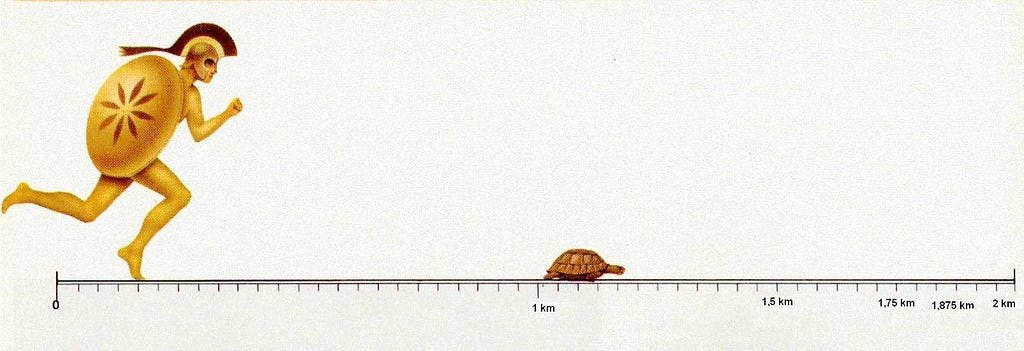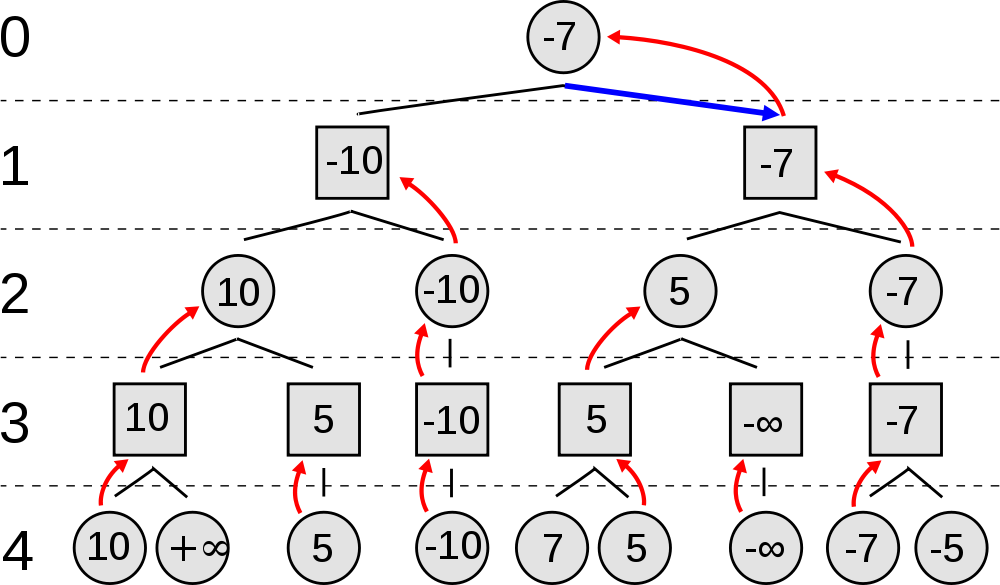Latest news about Bitcoin and all cryptocurrencies. Your daily crypto news habit.
Note: This is one in a series of articles for the 20th anniversary of the release of The Matrix, and the release of my new book, , The Simulation Hypothesis: An MIT Computer Scientist Shows Why AI, Quantum Physics, and Eastern Mystics All Agree We Are In a Video Game. Here, I’ll review some of the scientific reasons why this may be the case. A version of this article was originally published on scientificinquirer.com.
From Science Fiction to Science
This year on March 31 marks the 20th anniversary of the release of the groundbreaking film, The Matrix and the release of my new book, The Simulation Hypothesis. The Matrix was influential in many ways — the incredible special effects, the no holds barred action, etc. Like Star Wars before it, it has gone on to become a cultural phenomenon that extends well beyond the film itself. This is partly because of its philosophy; The Matrix is perhaps the most popular incarnation of what we now call “the simulation hypothesis” — which is the idea that we are all living in a giant shared online video game.
Admittedly, the idea sounds like science fiction. The creators of the Matrix, the Wachowskis, claimed to have been influenced by the work of Philip K. Dick, among others. The many adaptations of Dick’s work are well known, including Blade Runner, Total Recall, the Man in the High Castle, the Adjustment Bureau. In his stories, Dick was often obsessed with what was real and what was fake about reality and about the human experience — dealing with issues of artificial intelligence, simulated reality and fake memories.
The Matrix, you’ll recall, starred Keanu Reeves as Neo, a hacker who encounters enigmatic references to something called the Matrix online. This leads him to the mysterious Morpheus (played by Laurence Fishburne, and aptly named after the Greek god of dreams) and his team.
Even if you haven’t seen The Matrix, you’ve probably heard of what happens next, in perhaps its most iconic scene, Morpheus gives Neo a choice: take the “red pill” to wake up and see what the Matrix really is, or take the “blue pill” and keep living his life. Neo takes the red pill and “wakes up” in the real world to find that what he thought was real was actually an intricately constructed computer simulation — basically an ultra-realistic video game!
 Keanu Reeves in the Matrix (src: Movie Web)
Keanu Reeves in the Matrix (src: Movie Web)
When the Matrix came out, the idea of living in a video game was squarely in the realm of science fiction. Today, the simulation hypothesis is debated seriously by computer scientists, philosophers, physicists and others. The reason this argument is taken more seriously now is two-fold:
- the philosophical “simulation argument”, put forward by Oxford’s Nick Bostrom, and
- the “video game simulation argument”, about the rapid development of video games, put forth by, among others, Elon Musk.
Two Major Developments
The first was when Oxford professor Nick Bostrom published his 2003 paper, “Are You Living in a Simulation?” Bostrom didn’t say much about video games; instead he made a clever statistical argument. Bostrom theorized that if a civilization ever got the Simulation Point, it would create many ancestor simulations, each with large numbers (billions or trillions?) of simulated beings. Since the number of simulated beings would vastly outnumber the number of real beings, any beings (including us!) were more likely to be living inside a simulation than outside of it! Other scientists, including physicists have taken up this argument.
In the video game version of this argument, we have the rapid advancement of graphics technology. Elon Musk, speaking at the Code Conference in 2016, asserted that 40 years ago, we had pong, which was essentially two lines and a dot. Today we have VR and AR and MMORPGs — all based on 3D technology. If the pace of video game development continues, in a few decades we would have hyper-realistic games, indistinguishable from reality.
I call this point the Simulation Point, and in my new book, The Simulation Hypothesis, one part is dedicated towards the stages of technology needed to reach this point. It’s much easier to see a path from today’s VR to something like The Matrix than it was in 1999 when the movie was released. With games like Fortnite, Minecraft, and League of Legends having millions of online players interacting in a shared online world, the idea that we might actually be in a shared connected simulated world doesn’t seem so far-fetched as it might have in 1999.
In this article, we go beyond Bostrom’s and Musk’s simulation arguments to explore some of the reasons why science might be telling us we are in a simulated reality, like the Matrix.
1. Pixels, Resolution, Virtual and Augmented Reality
Today we are already seeing with Virtual Reality that “full immersion” is possible. Anyone who has played a convincing VR game will realize that it’s possible to forget about the real world and “believe” the world you are seeing is real.
As a great example, I was playing a prototype of a Ping Pong VR game last year (built by Free Range Games), and even though it wasn’t realistic resolution, I lost myself and thought I was playing ping pong for real. So much so that I set the paddle on the ping pong “table” and leaned against the table. Of course, it was a VR table so it didn’t really exist — I ended up dropping the paddle (actually the Vive controller) onto the floor. As I leaned into the “table” I almost fell over before realizing that there was no table. In other words, to quote from The Matrix, there is no spoon.
The immersion comes not just from the number of pixels, but from the controls and responsiveness that VR is able to achieve. In the novel (and Steve Spielberg film) Ready Player One, which was about a VR world called the OASIS, users had lightweight glasses and wore haptic suits and walked on omnidirectional treadmills to add realism. In that world, the OASIS was preferable to real life.
The fact that 3D models can be used to create realistic looking objects in films(a glance at movies like Blade Runner 2049 will convince you that we have enough pixel resolution to create realistic looking objects), and that 3D printers can be used to “print” physical objects shows that the physical world can be represented by information, a key part of the simulation hypothesis.
Where does the responsiveness and fidelity come from? The limitations today are in real-time rendering and in they way that objects interact with each other inside the world. Most games have a physics engine and a rendering engine. The physics engine is never fully realistic (otherwise it would take you too long to go from one part of the game to the other), and the rendering engine is what’s responsible for making you “see” what the world looks like by deciding what color pixels go where. We can easily see that full immersion may be possible in a few years time.
2. Pixels, Quanta, and Zeno’s Paradox
Speaking of pixels, could it be that what we call the physical world also consists of pixels?
I recall late nights at MIT during my undergrad years where I had philosophical debates with my classmates about the nature of reality. This was the first time I’d heard of Zeno’s paradox, who presented it in terms of Achilles and a Tortoise. If Achilles was behind the tortoise, and he always had to make up half the distance, how could he ever get there?
 Zeno’s parado involved Achilles and the Tortoise.
Zeno’s parado involved Achilles and the Tortoise.
Lurking underneath this paradox is the question of whether space is quantized or if it is continuous. The idea was that if space was continuous, like numbers are (you can always find an infinite number of numbers in between any two numbers), how is it possible to touch an object such as the wall? You would always have to cover half the distance and never quite get there.
This was my first hint that space might be quantized.
Today’s physicists generally acknowledge the Planck length as being the smallest amount of space that can be measured. Below that length, the quantum fluctuations make it impossible to measure anything with any reliability. For all practical purposes, the Planck length is our minimal addressable “pixel” of space.
Moreover, physicists tell us that most of what we think of as a solid object is actually 99% empty space, especially if you look inside the atom. The quanta in quantum physics consists of discrete quantities — of energies or “states” that a particle can exist in. Newton’s equations assumed a continuous amount of space; it turns out the universe may be more quantized than we thought.
A related question is whether time is quantized? In all computer simulations, there is the idea of “generation” or “steps” in the simulation. These are some multiple of the processor clock-speed, which is the minimum speed at which something could be measured for any simulation running on that processor. Whether time is quantized in the real world is an open question, though there are some that suggest it is, and planck’s time constant (the amount of time it takes the speed of light to travel the planck length) is the minimum quantied time. If so, this would be more evidence that we live in a computation based reality.
3. The Collapse of the Probability Wave, Quantum Indeterminacy
In quantum physics one of the most intriguing ideas is the probability matrix, which is an interpretation of how subatomic particles can exhibit properties of both a wave and a solid particle at the same time. At the level of an electron or a photon, the wave is interpreted as a set of probabilities of where the particle might be at any given time. When we observe a particular possibility, then the probability wave is said to “collapse” and we see a single particle in a particular location. This is called Quantum Indeterminacy.
How does the probability wave collapse? This is one of the biggest mysteries in physics. The best answer physicists have come up with is that consciousness somehow determines the collapse. Max Planck once wrote, “I consider consciousness as fundamental and matter as derivative”.
An even bigger mystery is why does the universe work this way?
The simulation hypothesis provides a pretty good answer. The reason that video games have advanced so far in a few decades is because of optimization techniques. It would be impossible even for today’s computers to render in real time all the pixels of a single 3D world — instead, information is stored as 3D models outside the rendered world and then only what a particular character can see from a certain angle is rendered. The golden rule of video game rendering engines is: render only that which can be observed!
Many adherents of the simulation hypothesis think that quantum indeterminacy is an optimization technique with the same basic idea: only render that which is being observed.
The most famous example of this is Schrodinger’s cat, the poor feline who is trapped in a box with radioactive material. After an hour, the probability is that hte cat is either dead or alive. Common sense tells us that the cat is already either dead or alive, and when we open the box we are merely finding out what happened. Quantum physics tells us this is wrong: until we are there to obeserve it, the cat is actually both alive and dead at the same time — what’s called a quantum superposition!
4. Future Selves, and Parallel Universes
Another related aspect of Quantum Physics that sounds like science fiction is the Parallel Universes theory, where we branch into different “universes” when we make decisions. If that’s true, then there is a directed graph of multiple universes that are branching out each time we make a decision, resulting in different timelines (in fact, the parallel universes theory was put forward to solve the grandfather paradox of time travel).
Which of those universes do we branch into? this may have to do with the one that is most “optimal” — meaning these universes may or may not exist as actual physical realities.
 The Minimax algorithm looks at possible futures, calculating which one is the most optimal for a video game.
The Minimax algorithm looks at possible futures, calculating which one is the most optimal for a video game.
Physicist Fred Alan Wolf, for example, says that information from these possible futures is coming to us in the present and that we send out an “offer wave” into the future, which is interacting with the “offer waves” coming from the future to the present. Which possible future we navigate to depends on which choices we make, and how these two waves super-pose on each other (or cancel each other out). These are startling results. Future probable selves are sending back information to the present, and we are consciously choosing which path to follow.
This reminded me of the very first video game I made back at MIT. The way that the computer chose the next move was to project the possible futures, and then use a certain algorithm to “rank” those futures, and then bring those values back to the present and then the AI would choose the path to follow.
Did the possible futures we were calculating in our game actually exist? Or were they just probabilities? I realized that this isn’t too much different from what’s happening at the quantum level, except that in existing games like chess or checkers, we use a simple function (based on the rules of the game) to decide which of the paths is most optimal. We used the “minimax” algorithm in game design, trying to maximize our score and minimize our opponents score at each “turn of the future”.
Physicist Thomas Campbell, in his 2003 book, My Big TOE (Theory of Everything) also proposes that there is a fundamental function and that we are essential in a computatiuonal universe that branches off possibilities and uses an evaluation function, just like a video game! He and a team from Caltech raised funds in 2018 on kickstarter for a series of experiements to try to prove this!
5. The Speed of light
Another big mystery is why the speed of light is one of the few constants, one of the few fundamental values in physics. In fact, all matter has been equated with energy, and energy may be a derivative of light itself. While other things change, including gravity and space-time, Einstein found that the speed of light remains fixed.
Why would the speed of electromagnetic waves be the same speed at which information can travel through the universe?
In video games, it turns out that pixels are based on light — they are illuminated for a temporary period, and all communication happens between computers at the speed of light. Just as in relativity where simultaneity cannot really be guaranteed, the same is true video games — each player is working off of his computer and responding to information about the game, which is being sent to cloud servers outside the rendered world. The cloud serve is doing its best to respect simultaneity and order the events, but it may actually be impossible.
Conclusion
Along with the statistical simulation argument and the advance in video game technology, these are some of the reasons why scientists are starting to take the simulation hypothesis seriously. In fact, many physicists and biologists are starting to realize that underneath the physical objects they are studying, the universe is actually information.
Famous physicist John Wheeler in his autobiography wrote “it from bit” — meaning that bits, not matter, are the fundamental “thing in the universe”. In fact, he said physics went through three phases in his career and each phase was an evoluation of our understanding of the universe. The fist phase was that “everything was a particle” (material, newtonian model), then “everything was a field” (quantum probability model), and finally, “everything is information” or bits.
If everything was information, or bits, then this would not only be consistent with a video game simulation like that in The Matrix, it would explain some of the big unanswered questions in science — why does it work this way?
While we aren’t able to duplicate The Matrix at this stage of our technology, our computer science and video games have gotten far enough along that we are well on the road to the Simulation Point.
Buy Rizwan Virk’s book The Simulation Hypothesis: An MIT Computer Scientist Shows Why AI, Quantum Physics, and Eastern Mystics All Agree We Are In a Video Game, or find out more at www.zenentrepreneur.com
Originally published at scientificinquirer.com on March 22, 2019.
Are We Already in the Matrix? was originally published in Hacker Noon on Medium, where people are continuing the conversation by highlighting and responding to this story.
Disclaimer
The views and opinions expressed in this article are solely those of the authors and do not reflect the views of Bitcoin Insider. Every investment and trading move involves risk - this is especially true for cryptocurrencies given their volatility. We strongly advise our readers to conduct their own research when making a decision.
